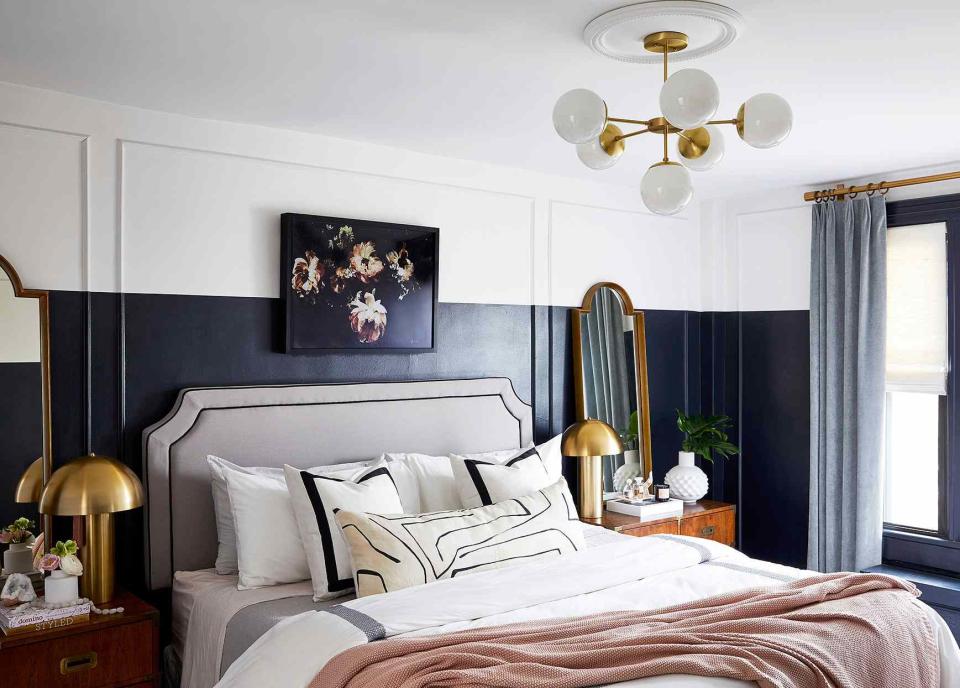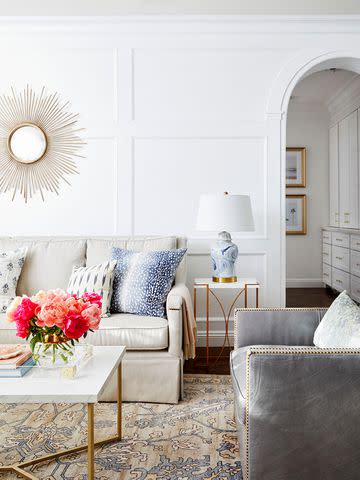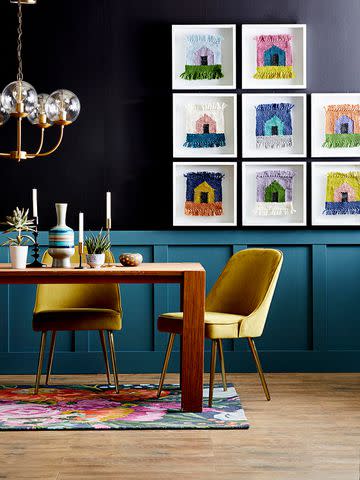Is Peel-and-Stick Trim the Secret to a More High-End Home on a Budget?
Less permanent and easier to install than traditional trim, peel-and-stick trim is giving spaces a major visual boost. But is it right for every home?

In design, it’s the details that count. The right accents set a space apart and give your home a polished feel. Features such as elegantly carved baseboards and detailed doors take you from builder-grade basics to chic, elevated style.
But, as anyone who has done a renovation knows, these extras can be very pricy. According to some TikTokers, though, there’s an easy do-it-yourself solution to get a high-end pricy look: peel-and-stick trim. This removable, non-permanent product, like peel-and-stick wallpaper before it, promises a custom look, no contractor—or special tools—needed. With affordable peel-and-stick trim, design enthusiasts around the world are giving their spaces sophisticated detailing and high-end finishes, sans carpentry skills.
Is this trend too good to be true, or a DIY you should try? We talk to design experts to get all the details on peel-and-stick trim so you can go into your next project prepared.
:

What Is Peel-and-Stick Trim, and Why Is It Trending Now?
Peel-and-stick trim (sometimes referred to as “self-stick” trim) is a flexible strip of foam, vinyl, or a similar material that can be added to your walls as baseboards or crown molding or to create chair rails, picture rail trim, or other types of trim and architectural detailing. One of the biggest reasons for peel-and-stick trim’s popularity is the ease of application. There’s no need for special tools—most can be cut with a good pair of household scissors—and the adhesive is already applied. The installation process is, literally, peel and stick.
This trim is available in multiple styles, from simple to ornate, and is often pre-primed so it can be painted to fit seamlessly with the rest of your decor. There are even kits with precut trim that can be used to create wainscoting or other more elaborate trims with the promise that just about anyone can use these products to achieve a high-end look in their home.
The appeal of peel-and-stick trim is obvious—the idea that you can get an upgraded look in your space quickly and inexpensively sounds like a dream! TikTok videos show beautiful before and afters where posters have transformed their homes from ho-hum to haute in an afternoon. And it’s true: These products can instantly impact your space.
But not all peel-and-stick trim is created the same, and there are some important factors to consider before using this option in your home.
:

What to Know Before You Try Peel-and-Stick Trim
The most important thing is that you are knowledgeable about what you’re buying. Looking at the peel-and-stick trim products on the market, it’s clear that many different items fall under this category. Some are more like a dense, slightly flexible Styrofoam or light plastic, and others are rolls of very flexible foam. While most reviews of the firmer plastic pieces are fairly positive, thoughts on the foam rolls are mixed, so you need to do your due diligence before you order anything.
There are other considerations, too. Below, we’ve gone through some of the pros and cons of peel-and-stick trim so you can evaluate if this is a trend you want to experiment with.

Pros of Peel-and-Stick Trim
If you’re still trying to figure out your style, sometimes you need to experiment and try something out to see if you like it. Since these trims can be installed and removed more easily than actual woodwork, they open up playful possibilities.
Erin Jones, the creator of Everything Eryn, has used peel-and-stick trim to make some dramatic—and beautiful—transformations in her space while keeping her projects budget-friendly.
“You can really be creative and use it anywhere,” she says of this trim option. Jones used a unique trim to give her home a glamorous look that would be difficult to achieve with wood, which shows this option’s versatility beyond traditional designs.
You can also create intricate designs at a fraction of the price of having a contractor install custom millwork, which is especially appealing if you’re in a home you don’t see yourself living in long-term and don’t want to invest a lot of money into.
Additionally, this is a great beginner DIY project, because you don’t need a lot of equipment and it can give you the confidence and satisfaction of completing an impressive project in an afternoon.
Cons of Peel-and-Stick Trim
Not everyone is a fan of peel-and-stick trim, and one of the interior designers we spoke with strongly advised against trying this trend.
“It’s not permanent. Peel-and-stick trim is heavy and bulky and has been known to ‘peel off’ over time,” says Chris Jovanelly, Lead Interior Designer at Est Est. “If you are going to put the effort into making it stay, I suggest investing in the actual trim. If done correctly, trim can be a piece of fine craftsmanship. Peel and stick options can take away from the original art form.”
Even fans of the products like Jones caution that the trim can damage your walls—something to consider before you apply it, especially if you’re renting.
“Not all peel-and-stick wallpaper/trim is considered renter-friendly,” Jones says. “Every time you stick something to a wall, you risk wall damage or losing some paint during the take down.”
But Jones does have tips for picking products that are easier to remove.
“Not everyone is okay with fixing the wall post-trim, and that’s totally fine,” she says. “For those people, I would suggest [options] with the keywords ‘easy take-down,’ ‘renter-friendly,’ or ‘easy peel-off’ and avoid wallpaper/trim with the keywords ‘contact paper,’ ‘paste and go,’ and ‘spray water to activate glue’ etc. I would also suggest using a heat gun to take down any peel-and-stick wallpaper or trim—it will soften the adhesive for easy removal. I would also suggest lightly sanding and cleaning the wall for better adhesion.”
Jones also advises that you patch test a small area to see how your wall reacts to the specific product you want to use. And, if you do decide to proceed with the application, Jones also has a video of her clever hack that can minimize the damage to your walls.

There are some spaces where peel-and-stick trim is not ideal. While product descriptions usually suggest that they can be used as baseboards, the adhesive probably wouldn’t hold up to the daily wear and tear of a high-traffic area like an entry hall or mudroom. The humidity of bathrooms or water from a kitchen sink may also affect the durability of the adhesive. In other words, this trim works best in low-traffic, room-temperature, and humidity-stable areas.
Keep in mind, too, that no houses are perfectly level. Applying trim can highlight imperfections, particularly in old homes. You can add caulk to help hide gaps and flaws in your walls but, of course, that makes this a more complicated project to execute as well as remove if you decide the look isn’t for you, defeating part of the purpose of choosing an easy DIY option like peel-and-stick.
At the end of the day, peel-and-stick trim can be a fun way to add a lot of flair to your home quickly and inexpensively. But be sure to use it in places where it won’t be easily jostled, and be realistic that it may not last forever. If you are looking for a permanent upgrade, you may still want to invest in traditional millwork. Ultimately, though, it’s your home, and it’s up to you which projects to splurge on and when to pick a thrifty DIY.
:

